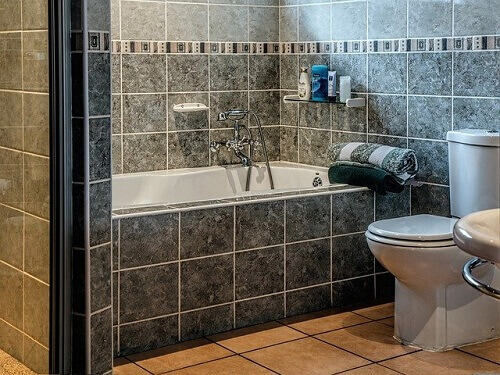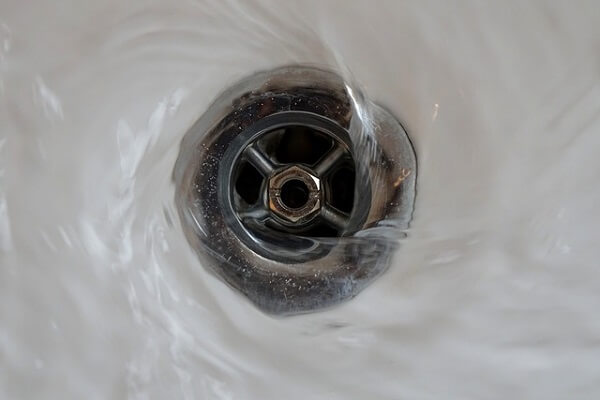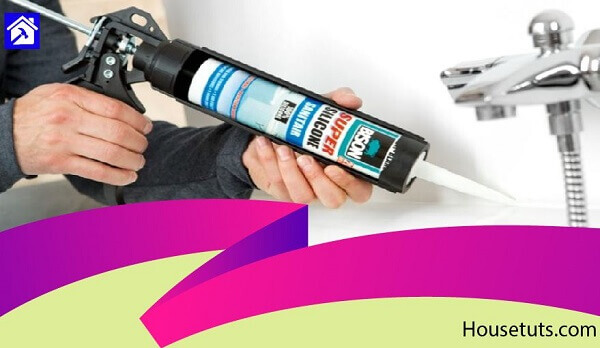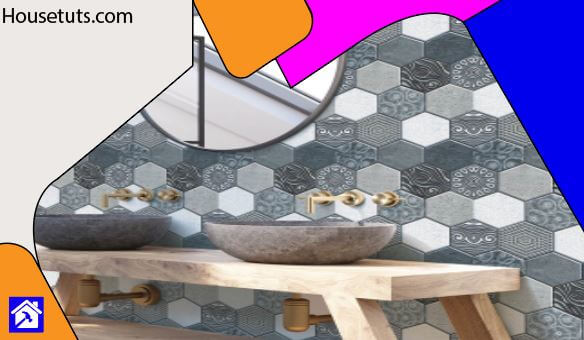How To Remodel A Bathroom (Step-By-Step Guide)
You can increase the chance of remodeling your bathroom to look as good as new with these steps, this article will show you steps to remodel a bathroom.
You can follow the bathroom remodeling steps below in remodeling your bathroom to help you get a better job done.
So if you are planning to renovate your bathroom, these steps are precisely what you have been looking for.
Following these steps will help you to get everything done correctly so that you will be happy with the result of your hard work.
Remodeling your home is one of the best things you can do to raise the value of your home if you view your home as an investment.
This is because people see their homes as an investment that they plan to sell within some years—as such, raising the value of the home is very important to them because they want to make sure that they get more for the home than what they initially paid for it.
So below are the steps for remodeling a home. Let us get started already.
Step 1 – Creating A Realistic Budget

The first step for every project is to set up a realistic budget for the project.
The budget has to address every expenditure for the remodeling process. So for a remodeling of your bathroom, the funding will account for labor and materials costs such as new fittings, fixtures, and surfaces.
The renovation process of a bathroom can be a complicated and expensive one. Due to this, bathroom remodeling needs adequate planning.
There also must be a longer timetable and careful coordination of all the workers involved in the remodeling processes.
Simplifying the process of budgeting for your bathroom remodeling project can be achieved by engaging the services of a designer or a remodeling service responsible for tailoring the new bathroom design to align with your existing budget.
The remodeling service or designer will provide comprehensive guidance throughout the entire process. It’s important to recognize that the budget allocated for the remodeling process will encompass the designer’s fees as well.
Unless you decide to exempt the designer and pay them out of your pocket, the designer’s bill will also vary according to the size of the project you are doing.
You can be an experienced and qualified designer by going to any local home improvement store.
However, if you decide not to use a professional designer for the job, you will have to set up the budget on your own. You can make use of a computer spreadsheet to handle this task.
You can also purchase a notebook and use it for this task by keeping track of all the expenditure that goes into the project.
Obtain price quotes from contractors and suppliers, bearing in mind that certain quotations may have limited validity periods.
Upon compiling the budget, ensure to allocate an additional 10 or 20 percent to account for any unexpected changes, repairs, or upgrades that may arise during the remodeling process.
Certainly, you might be contemplating the cost associated with remodeling your bathroom.
As previously mentioned, the cost of the remodeling project hinges on its size, the existing state of the bathroom, and the chosen fixtures and features.
However, it will cost you from around $6.000 to $ 10,000 on average for a small to medium-sized bathroom.
Also, remember that some towns require you to receive a building permit before processing the remodeling process, and you will probably have to pay for this.
Most of the time, the contractor or the designer would take the permit. If that does not happen, you will have to get the building permit yourself.
Step 2 – Demolition Of The Old Bathroom
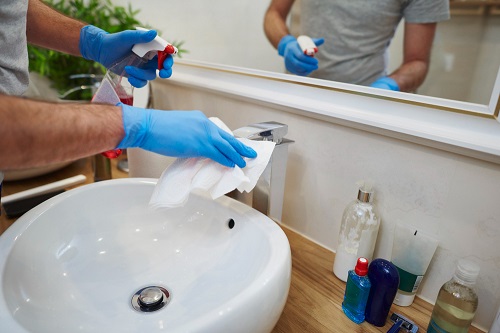
This is usually the first step of the remodeling process. The old bathroom would have to be demolished to build the new one. Just two people can do this if the toilet is a small-sized one.
However, if it is significant, it would take more people and probably more days. If you decide to do this yourself, make sure to wear the necessary protective clothing such as gloves and glasses to protect yourself.
You should rent a dumpster for the debris that will appear after the demolition process.
Step 3 – Order The Needed Products Early

You can have some fun while shopping for new products for your new bathroom, such as vanity cabinets, faucets, toilets, light fixtures, showerheads, floor tiles, and sinks, you can check out how to retile a bathroom.
However, it is also essential to make sure that you order the products earlier before the project begins.
One of the things that can bring remodeling to a sudden halt is when you realize that some of the products needed are not present or back-ordered.
When the plumber or an electrician working on the remodeling project walks away due to the unavailability of products to work with, you cannot guarantee that they will still be available by the time the products arrive.
Getting an interruption in the renovation process can also result in a domino effect by throwing off the sequence of the other contractors.
This will eventually affect the work timetable, and you will now be looking at eight weeks instead of 6 weeks.
Step 4 – Choosing The Appropriate Bath Surfaces
While selecting surface materials for your new bathroom, consider that the chosen materials must be suitable for installation in the new bathroom.
The walls, floors, showers, and bathroom vanity tops are constantly getting exposed to soapy, hot, and cold water and steam. The surfaces eventually become slippery, and this becomes dangerous for people.
Using porcelain tile is one of the best materials for any bathroom floor.
It is more complex than ceramic tiles, and there are several sizes, shapes, colors, and patterns that you can choose from. There are also porcelain planks that look like wood flooring.
When opting for tiles for your bathroom floor, prioritize the tile’s slip resistance. This criterion is equally crucial for tiles used in the shower and toilet areas.
Popular choices for vanity countertops include granite, marble, and quartz. Solid surfacing materials such as Corian and Staron are also viable options.
All of these are highly durable, and they hold up well in any condition in the bathroom.
Step 5 – Planning For Surprises
As previously highlighted, bathroom remodeling can be a complex undertaking. Therefore, it’s advisable not to be taken aback if unexpected occurrences arise during the ongoing project.
Until the commencement of the project with the removal of the old bathroom, predicting unforeseen challenges is challenging. Nonetheless, you can mitigate this risk by requesting contractors to inspect the bathroom for any concealed issues during the bidding process.
You can also hire a professional inspector to inspect the bathroom thoroughly to sniff out any hidden trouble. Suppose you can access the toilet from below.
In that case, you should remove any insulation to allow the professionals to get a good view of the underside of your bathroom so that they can identify any hidden problems and alert you before the project starts.
Step 6 – Avoid Change Of Orders
One way to finish your budget quickly is by changing orders. This refers to any change that happens after the budget has been set and the work on the remodeling has begun.
During the project’s progression, you may decide to request alterations that deviate from the initially outlined plan.
This is something that you must avoid as much as possible. This is why you have to make sure that you design everything perfectly according to your liking before you begin remodeling the bathroom.
One way to reduce cost and shorten the duration of the work is to avoid relocating the plumbing pipes. Moving these pipes can be time-consuming and expensive as well.
Step 7 – Building A Safer Bathroom
You can provide a better level of safety in your bathroom by installing grab bars. You may be thinking that grab bars are ugly and that you do not want them inside your new bathroom.
However, you can get designer grab bars today, not the practical and industrial ones that were used some years back.
These new stylish and attractive grab bars are offered in a wide variety of finishes that you can choose from to match your new bathroom.
Some grab bars are even used as towel racks as well, thereby giving them double duty in your new bathroom. This allows them to blend into your bathroom design with ease. You can consider getting about two or three grab bars in your shower stall and the bathtub.
One should be mounted beside the toilet, another mounted outside the tub, and the last outside the shower. You should also follow all the installation instructions that came with the grab bars.
Step 8 – Addressing Storage Needs
The best time to add some storage space to your bathroom is remodeling.
The storage can be essential if other people share the bathroom in the house. When you remove the walls to enlarge the size of the old bathroom, you should look to make room for a linen closet.
It does not have to be too big. A 24-inch-deep x 32-inch expansive closet will be enough room for keeping towels, bath mats, toilet paper, and cleaning supplies.
Ensure that the swing of the closet door does not impede the bathroom entry or the shower doors. Additionally, if space permits, you can consider replacing a single-sink vanity with a double-sink vanity.
Not only will you get a second sink, and you will also end up with a giant cabinet. You can also have wall-mounted shelves installed as an inexpensive way to increase the storage in the bathroom.
You can also choose a freestanding bath cabinet or a shelving unit.
Secure any freestanding cabinets or shelving units to a wall to prevent them from toppling over.
Step 9 – Setup Lighting

You should also install proper lighting in your new bathroom, which will make the new bathroom more attractive, welcoming, and warm.
However, the main reason for the proper lighting is to make sure that the bathroom is a lot safer than before. When a toilet is dimly lit and shadowy, it increases the chance of someone tripping and getting injured.
This can happen to young children and older adults. There should be two types of lighting in every bathroom, ambient and task.
Ambient lighting, typically supplied by ceiling lights such as flush-mounted fixtures, offers general illumination for the entire bathroom.
The lighting will deliver precise illumination for a specific tasks like applying makeup, personal grooming, and shaving.
The task lights are usually provided by wall-mounted sconce lights installed beside the mirrored bathroom cabinet.
You can get proper advice on bathroom lights when you visit any lighting showroom or a professional designer.
Step 10 – Upgrading The Ventilation System

The bathroom is one place that needs adequate ventilation at all times, and this is because the bathroom is a place that sees water and moisture daily.
You can install a ceiling-mounted vent fan to increase the ventilation and install Wall-mounted vent fans. Proper ventilation in the bathroom will help towels dry faster while reducing condensation on the floor, helping to mitigate slippery tiles.
It also prevents the growth of harmful elements like black mold and mildew in the bathroom. Also, make sure to keep the windows in the bathroom open at all times.
Upgrading the ventilation can be done quickly during the remodeling process. Check the airflow rating of a fan before you purchase it.
The airflow rating, measured in cubic feet per minute (CFM), is a critical factor. A quality fan should have a rating of at least one CFM per square foot of floor space.
For instance, if your bathroom is 50 square feet or smaller, a 50-CFM fan is sufficient. However, larger bathrooms may necessitate the use of more than one fan.
Conclusion
Remodeling your bathroom is an exciting yet complex task, as there are numerous aspects to consider and manage throughout the process.
With this guide, you will be able to remodel your bathroom exactly as you want it without having to extend your budget, you can also check out the types of floor tiles.


